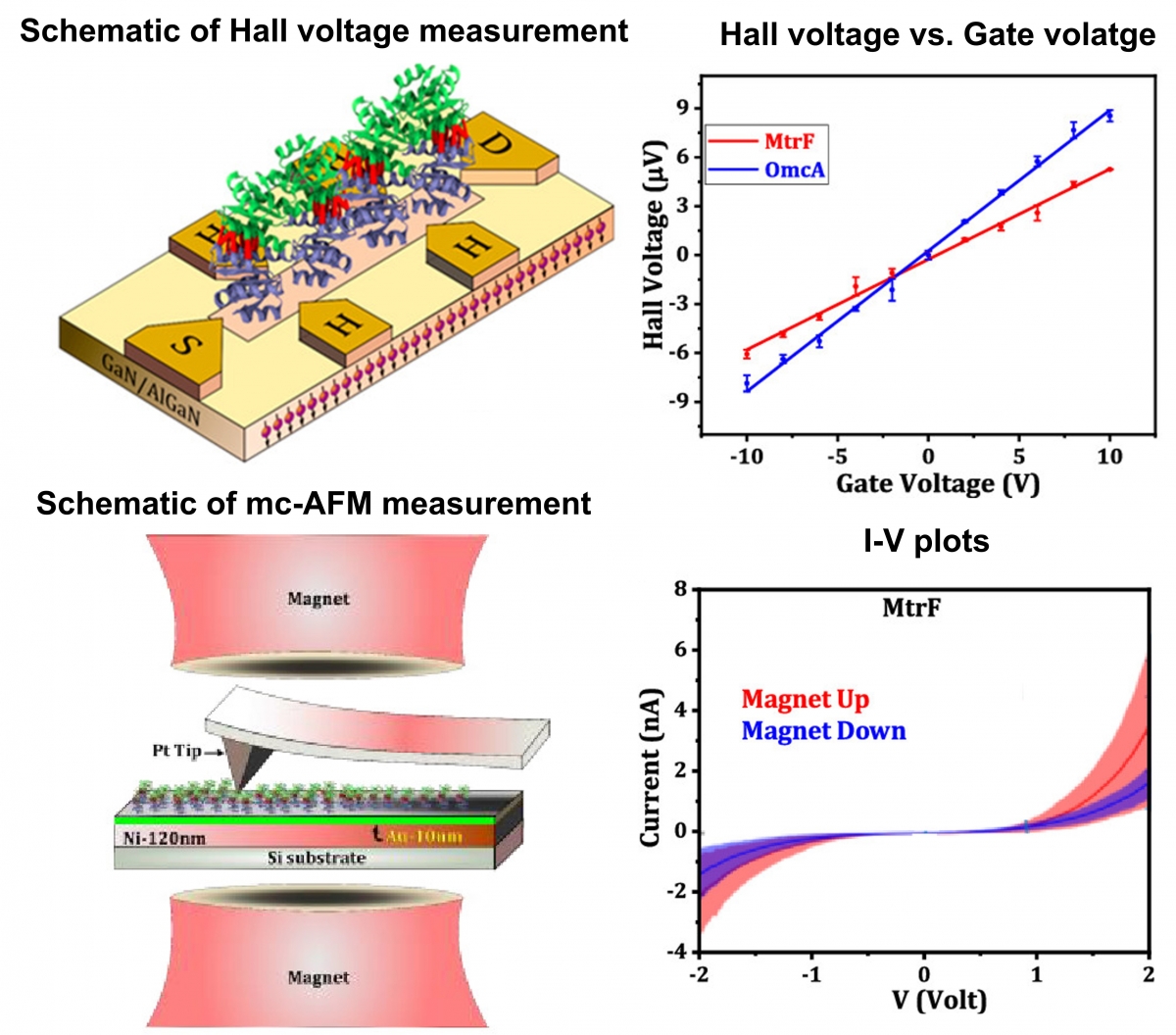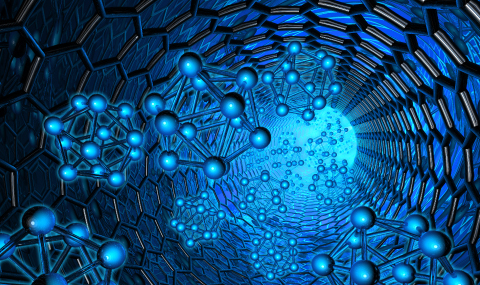We investigate the role of spin in electron transport through protein molecules studying the extent of spin polarization in the transferred electrons and spin-dependent polarizability in the proteins. The experimental techniques we apply here are magnetic conductive probe atomic force microscopy and Hall voltage measurement. Our study has implications for understanding how spin-dependent interactions and magnetic fields may control electron transport across biotic–abiotic interfaces in both natural and biotechnological systems.
Recently, we have studied the multi-heme cytochromes, located on the bacterial cell surface. It is known that these multi-heme cytochromes MtrF and OmcA function as a long-distance (>10 nm) electron conduits linking intracellular reactions to external surfaces. Using the above-mentioned technique, we showed that that electron transport through these extracellular conduits is spin-selective.

- S. Mishra, S. Pirbadian, A. Mondal, M.Y. El-Naggar, R. Naaman, J. Am. Chem. Soc. 2019, 141, 19198−19202.
Spin dependent electron transfer controls protein-protein interaction
The aim of this study is to investigate the role of electron’s spin in controlling protein-protein interactions (PPIs). We want to study the PPIs immobilizing one protein on the ferromagnetic surface and other protein in the solution.
We found that the spin-controlled charge transfer through protein molecules could control its interaction with other protein molecules. We investigated the antigen-antibody reaction kinetics and observed that the spin selective charge transfer at a distant site could control antigen-antibody interaction. Specifically, we studied the interaction of Histidine tag antigen and anti-His tag antibody immobilizing the antibody on the gold coated ferromagnetic substrate in presence of magnet. The number of antigen reacted was observed from the fluorescence microscopy. The Histidine tag was at either C-terminus or N-terminus. When, Histidine is tagged at C-terminus, antigen approaches with its negative pole towards antibody and due to charge polarization; positive charge is induced at the reaction site and negative charge at the surface site. Charge transfer from antibody to magnetic surface depends on the spin orientation of the magnetic substrate.

- K. Banerjee-Ghosh, S. Ghosh, H. Mazal, I. Riven, G. Haran, R. Naaman, J. Am. Chem. Soc. 2020, 142, 48, 20456-20462.

